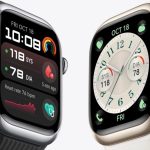However, primary school-age children in years 3-6 are still required to wear a mask until vaccination rates increase. Children have been absolute heroes, protecting the elderly and the vulnerable for two years, and for this we know they have suffered greatly. In 2022, children should have their overall health considerations put first and be burdened with the least restrictions.In Australia, the peak of Omicron infections occurred during summer holidays. After schools reopened in Victoria, NSW and Queensland, cases, hospitalisations, ICU admissions and deaths all declined. We saw the same patterns after schools reopened in 2020 with the ancestral strain and in 2021 with Delta. Schools do not drive infection but instead reflect broader community transmission.Queensland and NSW have never had a mask mandate for primary school-age children. No Nordic countries have had child mask mandates and several countries have never recommended masks in children. Finland has no restrictions on children at all and the Netherlands, Denmark and Norway all lifted restrictions in early February. Despite this, cases and hospitalisations there continued to decline.NED-5159-New Year jabs for kidsParents and teachers are moving around in the community and will be returning, triple vaccinated and unmasked, to shops and workplaces. These settings are just as likely to “bring Covid home” than kids from school.In Victoria, children are over-represented as a percentage of positive cases because they are tested so much. A million Victorian children are offered RATs twice a week and there are currently about 7000 active cases in primary school-age children. If the entire population was tested twice weekly, the number of cases and the age distribution of cases would look very different – with young adults likely being the most infected. Psychological and learning considerations in wearing masks are important too. Children communicate and learn better when they can see facial expressions. Kids grow up pairing words and facial expressions to interpret information in their environment, but now half that data is missing. A survey in England found students thought masks made others and themselves feel safe. However, 80 per cent of students also reported wearing a mask made it difficult to communicate, and more than half felt wearing one made learning more difficult. Most teachers also said masks made it difficult to communicate with students. The impact is greatest in the about 10 per cent of children with learning and attention issues, who already struggle to take in information, or for those with hearing impairments.A survey in adults reported masks negatively affected hearing, understanding, engagement and feelings of connection with the speaker. The World Health Organisation will soon release updated guidelines on Covid-19 and mask wearing in children. After closely reviewing all the evidence, it is highly likely the WHO recommendations will be that school-age children should wear a mask in accordance with current adult rules. We should follow these guidelines.The virus is here to stay. Many families will have been infected by now or know someone who has been infected. With 55 per cent of primary school-age children vaccinated and many children already infected, there is already a big wall of immunity. Nevertheless, some children are more vulnerable and special considerations need to be in place for their personal circumstances.Many infected children are asymptomatic. For children who develop symptoms, most are mild, without needing medical attention. Primary schoolchildren have had the lowest risk of being hospitalised and becoming seriously unwell. The hospitalisation rate is about three per 100,000 in children aged 5-11 years based on Omicron data from the US and the Netherlands. Having persistent symptoms after the acute illness, otherwise known as long Covid, looks to be uncommon in children and for the vast majority resolves within weeks or months. Rarely, a treatable multi-system inflammatory condition occurs a few weeks following acute illness in about one in 3000 cases.Because of the chance of this morbidity in primary school-age children, vaccination is recommended. No parent would want their child to be a statistic. The pandemic is not over and we do not know if there will be another variant and if so, whether it will be mild or more severe. During the peaks, masks contribute to reducing transmission and are one component of a multi-layered strategy. However, as we approach the tail of Omicron, mitigation measures can be dialled down for now, and that means lifting the mask mandate in primary school age children. Even though frequently tested children are a high percentage of active cases, this is not a metric that should be guiding policy. Instead, children should have their educational, mental health and developmental needs uppermost.These heroes deserve it.Fiona Russell is an infectious diseases epidemiologist and public health researcher at the Murdoch Children’s Research Institute.Professor Robert Booy is a Paediatric Infectious Diseases Physician and vaccinologist at the National Centre for Immunisation Research and Surveillance.
Powered by WPeMatico






